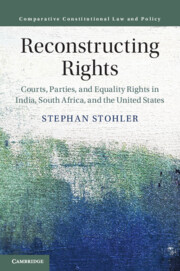 Reconstructing Rights
Reconstructing Rights Bibliography
Published online by Cambridge University Press: 09 July 2019
Summary

- Type
- Chapter
- Information
- Reconstructing RightsCourts, Parties, and Equality Rights in India, South Africa, and the United States, pp. 237 - 258Publisher: Cambridge University PressPrint publication year: 2019
